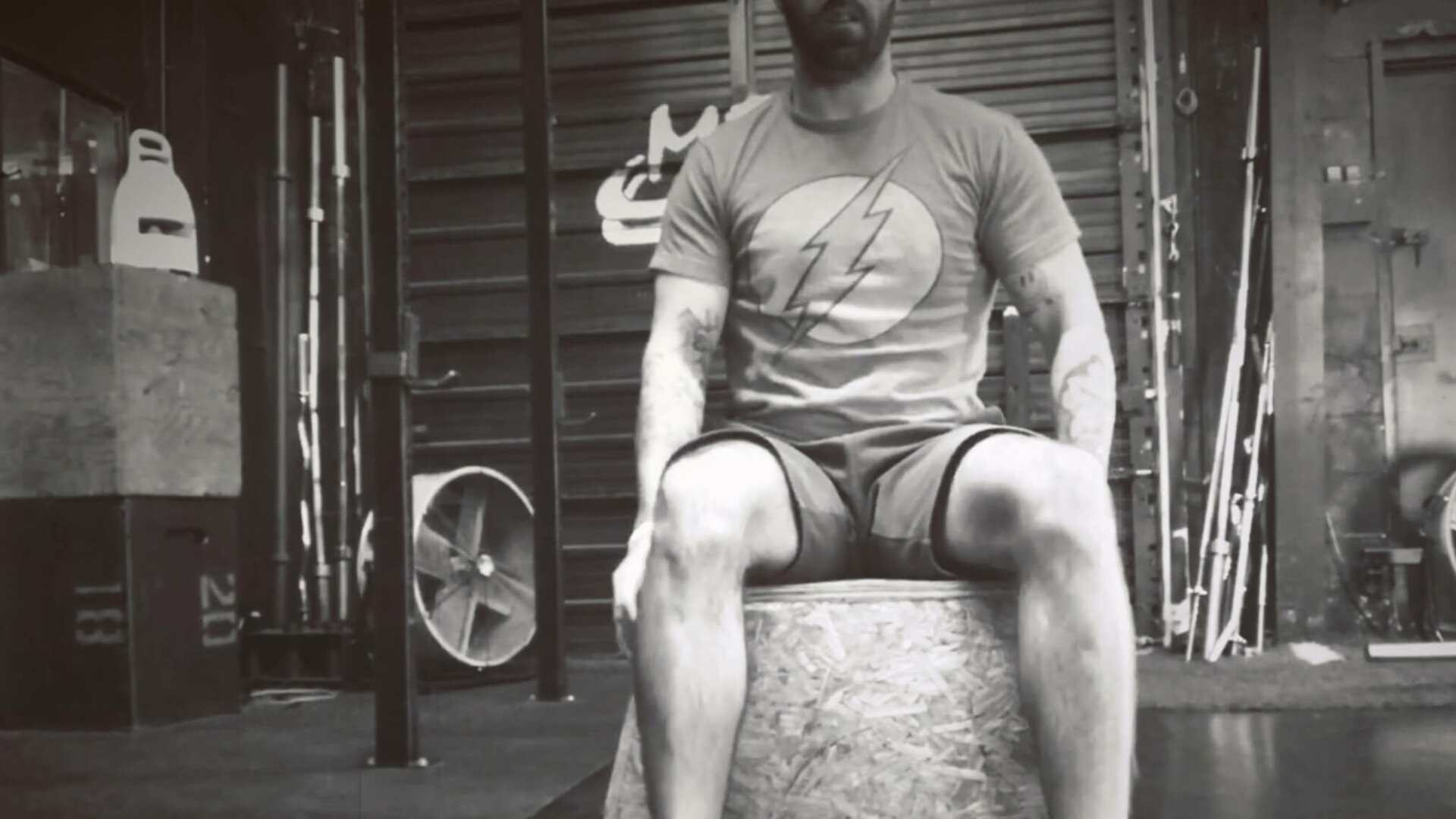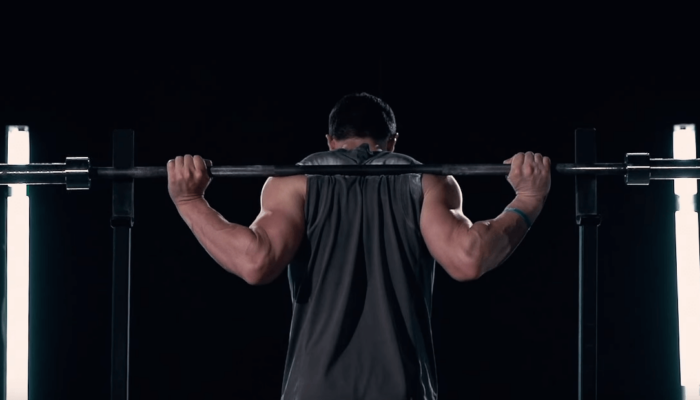Hack Squat/Behind the Back Deadlift
This one is weird and not seen often. But, it’s a wonderful deadlift variation with a bit more focus on your quadriceps, in particular, the vastus medialis, which you might also know as “the tear drop.” The vastus medialis is important for proper tracking of your knee cap and direct stimulation of it will help strengthen the knee joint. This exercise happens to work it well and it doesn’t place a whole lot of direct stress on the knee joint.
When you perform this, you might feel like you are both leaning forward and reaching back with your shoulders. This is normal. For one, it will keep the bar from bumping into your calves and altering the groove. Two, if you have a big butt it won’t get in the way of the bar path.
If hip and back mobility are an issue, a simpler alternative is to do them from the rack at a height that you can handle.
Peterson Step-up
Another way to directly work the vastus medialis, this exercise can be done as a quad exercise unto itself, and it can also serve as a good warmup, or prehab movement. When performing, your shin is going to be at a closer angle to your foot than in a regular step-up as all the force is coming from the ball of your foot.
In addition to that, it’s not one that you want to use a heavy load with. Depending on your strength levels, a 20-30 pound dumbbell is a good start. To scale it up, try to increase the height of the step before you increase the weight.
Last, if you find yourself using your non working leg for help, try pointing it to the sky to prevent you from pushing off of it.
Tibia/Fibula Rotations
Executed with a resistance band, there are several ways you can go about this. If you are in the camp where you can’t articulate the movement without moving your hip as well, that’s fine. Start from there, practice the internal and external rotation that way, and refine it over time to where you can articulate just the tib/fib.
Next, you have the option of using the band to pull you in to a given rotation. As you can see in the video, the band is looped around your instep and you are moving from neutral to either internal or external rotation with the band’s assistance. If you can’t do the motion without the band, this is a good to help you get there.
Once you can perform the rotational movements of the tib/fib, you can strengthen the muscles that facilitate them (sartorious, popliteus, and gracilis) as well as the ligaments discussed earlier. To gain more movement and strength, you’ll do the opposite of what you have done before. You will use the band to provide resistance as you practice your rotations in either direction. If by some chance you happen to be hypermobile in this area, isometrics are a good alternative as well. All you do is keep the joint neutral, and resist the pull of the band.
For a more in depth look into the knee joint, check out How to Bullet-Proof Your Knees.





